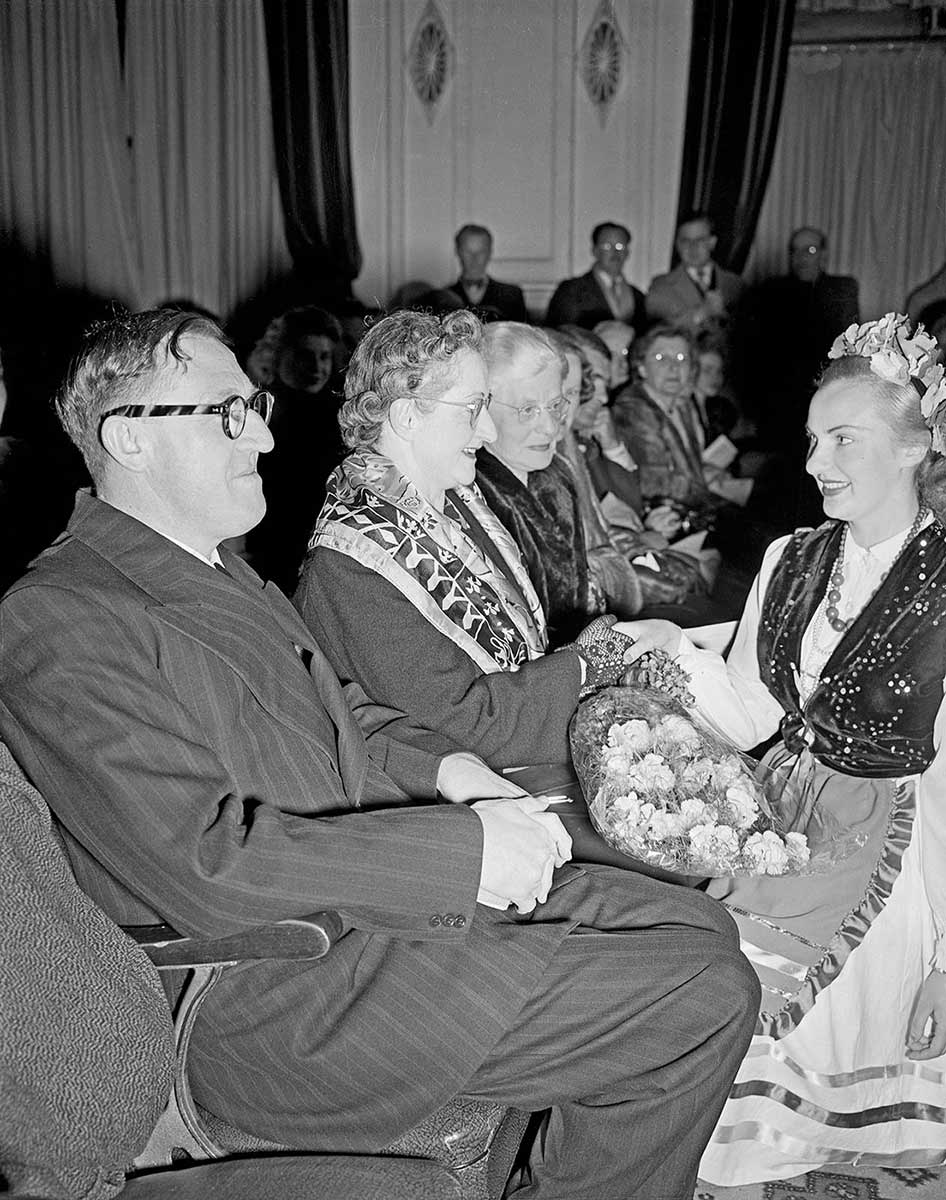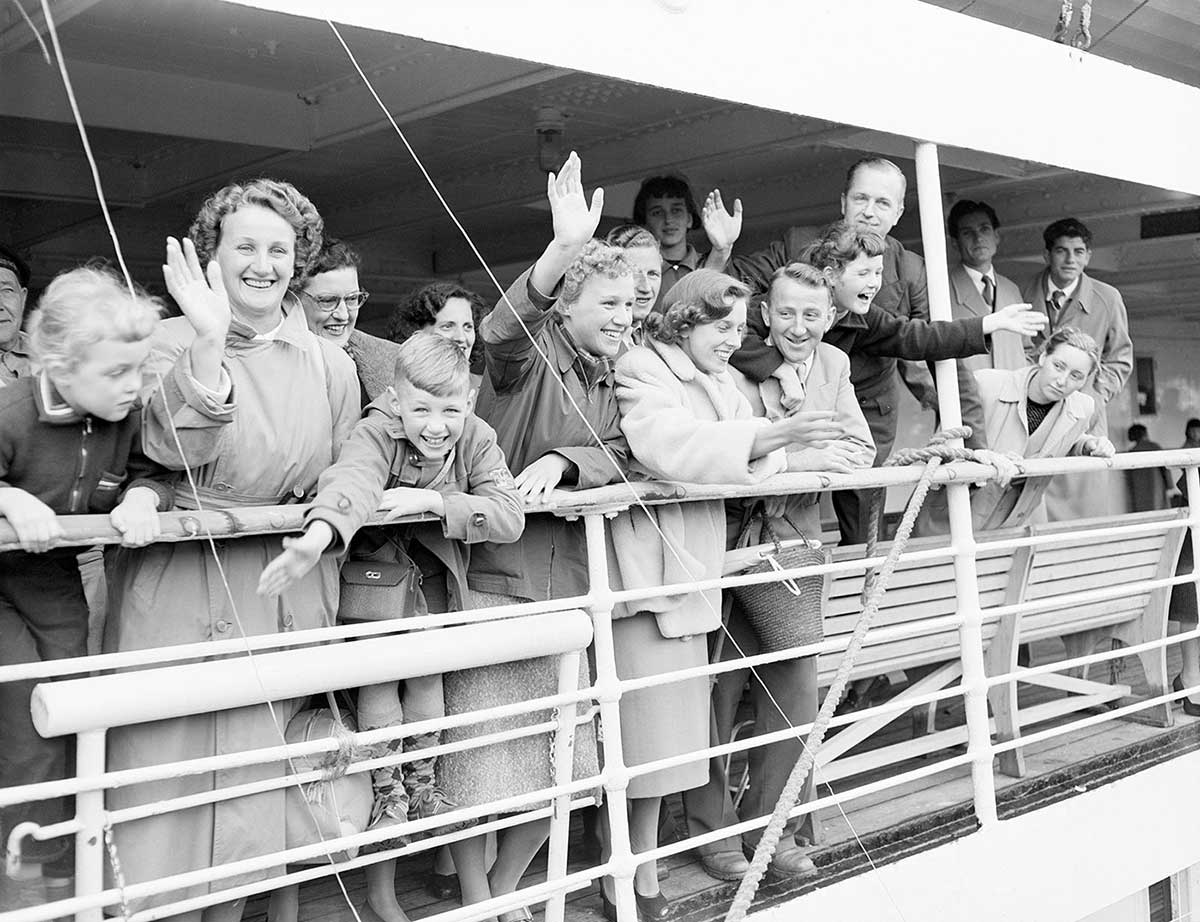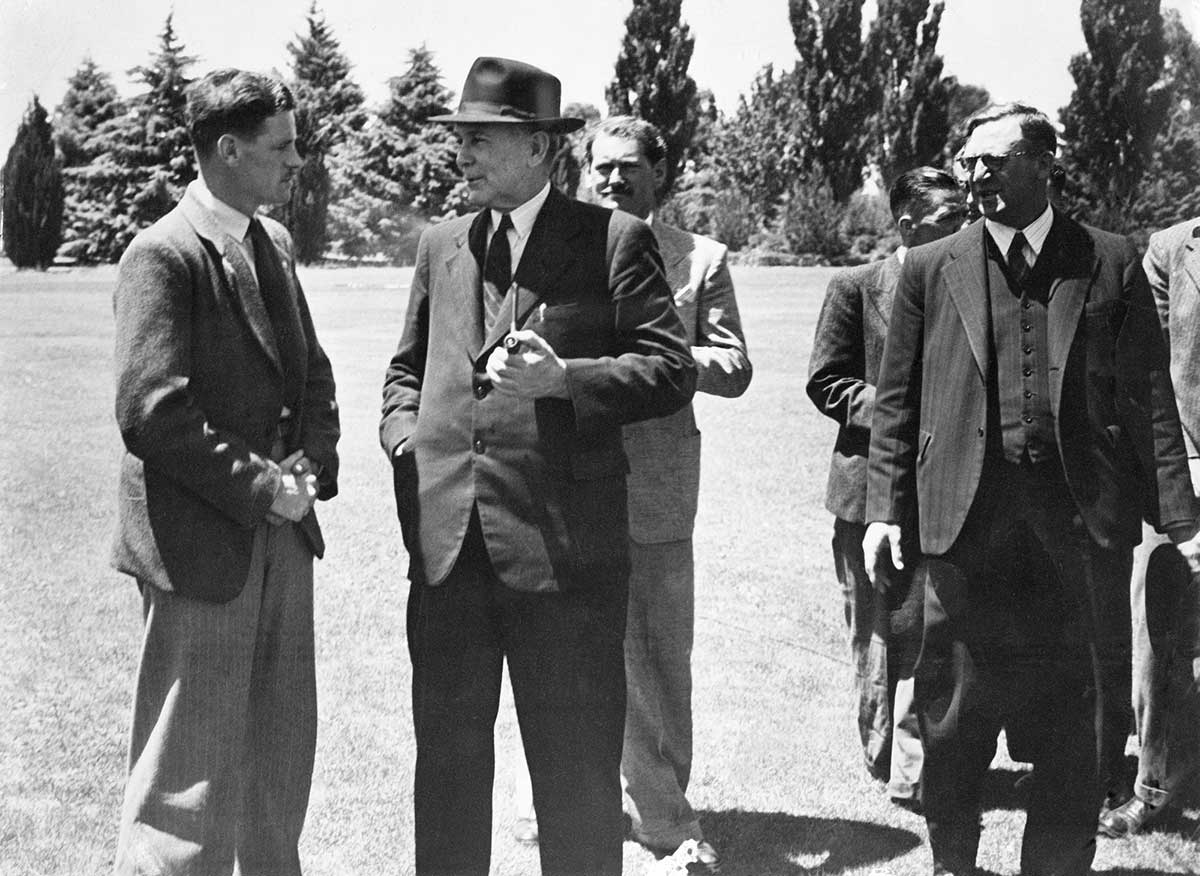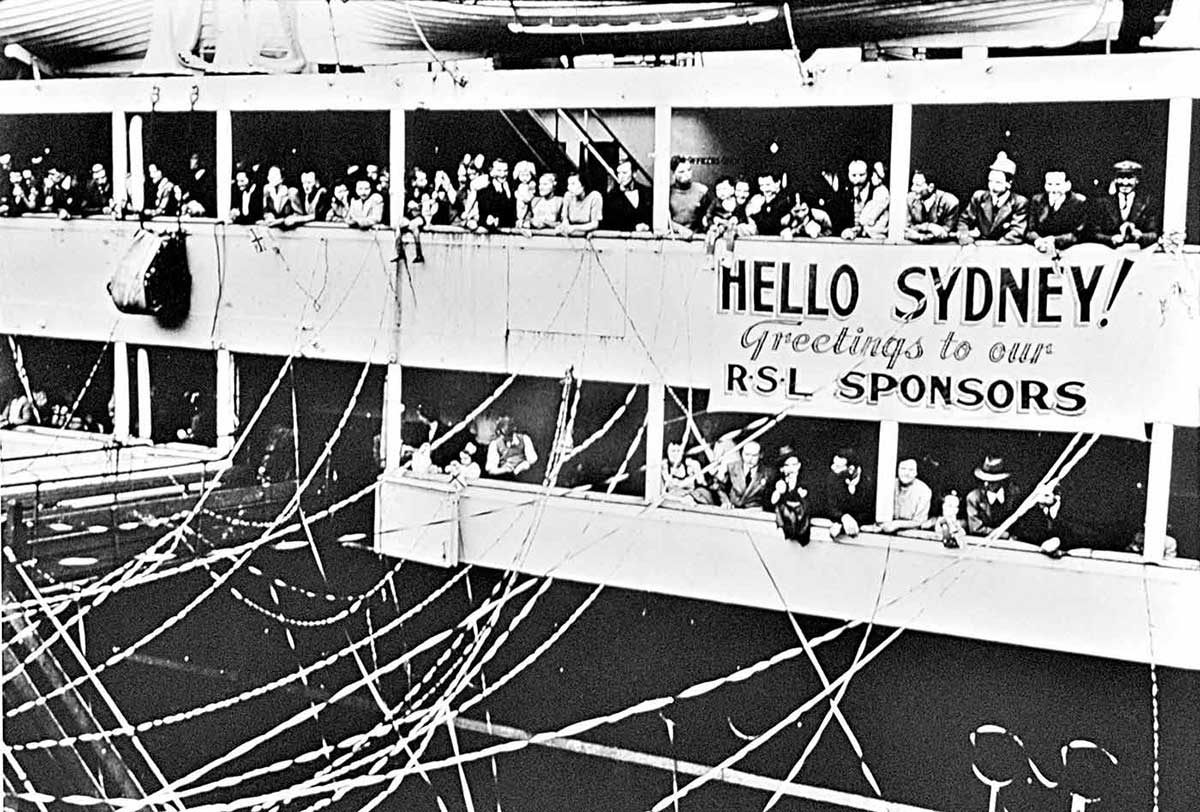Between 1945 and 1965, two million immigrants arrived in Australia. The decision by the Australian Government to open up the nation in this way was based on the notion of ‘populate or perish’ that emerged in the wake of the Second World War.
Among the new immigrants were the first government-sanctioned non-British migrants.
This massive influx of people transformed Australian society.
Arthur Calwell, Be Just and Fear Not, 1972:
Even in the darkest days of the awful conflict of the Pacific war, the Curtin Government gave much thought to population building. I remember Mr. Curtin telling Cabinet in 1944 that at war’s end there would have to be a Ministry for Immigration. He said we must have more people to develop and defend Australia.
Populate or perish
When Japan entered the Second World War in December 1941 its troops quickly moved south, occupying much of South-East Asia and the Pacific. Singapore fell in February 1942 and Darwin was bombed shortly after.
In Australia, the threat of invasion was very real and the country was more vulnerable than previously thought. These susceptibilities meant that well before the war ended on 14 August 1945, the government had begun considering policies that would boost Australia’s population and its defences.
Arthur Calwell was appointed Australia’s first Minister for Immigration in July 1945. Addressing parliament a few weeks later, he stated 'If Australians have learned one lesson from the Pacific war … it is surely that we cannot continue to hold our island continent for ourselves and our descendants unless we greatly increase our numbers … much development and settlement have yet to be undertaken. Our need to undertake it is urgent and imperative if we are to survive.'
Calwell’s call for immediate migration was significant but perhaps even more important were the final sentences of his speech: ‘The door to Australia will always be open within limits of our existing legislation to the people from the various dominions, United States of America and from European continental countries’.
For the first time, the government had declared that it was willing to accept migrants from beyond the British Isles. It was a huge step forward considering the prevalence of the White Australia policy and the underlying public attitudes.

Calwell’s immigration policy
The shift in government policy was influenced by the work of Melbourne economist, WD ‘Bill’ Forsyth.
In his 1942 book The Myth of Open Spaces, Forsyth argued that immigration and settlement should not be linked to the development of the rural sector, as had been the case after the First World War, but to the development of urban industry.
He further argued that, while postwar workforce shortages in Great Britain could limit Australia’s ability to attract British migrants, there would be reserves of labour in eastern and southern Europe.
These ideas featured in the papers of the government’s powerful Interdepartmental Committee on Post War Migration, and in Calwell’s speech.
The new policy set a target of a one per cent increase in the population as the result of immigration.
Suitable migrants
Even before the end of the war, Australia began negotiations with Britain about a migration scheme.
British politicians, including Prime Minister Winston Churchill, encouraged Britons to stay and rebuild their shattered country. Yet the Assisted Passage Migration Scheme (also known as the ‘Ten-Pound Pom’ scheme) proved extremely popular with war-weary British citizens. By 1947, more than 400,000 of them had registered.
Calwell also sought to meet immigration targets by selecting suitable migrants from Europe’s overflowing displaced persons camps.
The first shipload arrived in Australia in 1947 from Estonia, Latvia and Lithuania. They were all young and single and quickly became known as the ‘beautiful Balts’. As Calwell later admitted, ‘It was not hard to sell immigration to the Australian people once the press published photographs of that group.’
Changing the face of Australia
In the years that followed, policies slowly changed to accept migrants from southern and eastern Europe and, from the late 1940s and early 1950s, carefully selected temporary migrants from the Middle East and Asia.
In 1957 the Liberal government relaxed restrictions on ongoing temporary visas and made non-European migrants eligible for citizenship after 15 years’ residency (as opposed to five years for Europeans).
From 1946 to 1960 the Australian population grew by an average of 2.7 per cent per year. While this was largely due to a postwar baby boom, migration contributed to more than a third of this growth, adding 1.2 million people to Australia’s population and bringing the total population to about 10.3 million by 1960.
In our collection
References
Inside: Life in Children’s Homes and Institutions
More about Arthur Calwell on the Museum of Australian Democracy website
Arthur Calwell, Be Just and Fear Not, Lloyd O’Neil Ptd Ltd and Rigby, Hawthorn, Victoria and Kentish Town, South Australia, 1972.
Eric Richards, Destination Australia: Migration to Australia since 1901, UNSW Press, Sydney, 2008.
Gwenda Tavan, The Long, Slow Death of White Australia, Scribe Publications, Melbourne, 2005.
Jerzy Zubrzycki, Arthur Calwell and the Origin of Post-War Immigration Canberra, Bureau of Immigration, Multicultural and Population Research, 1995.


